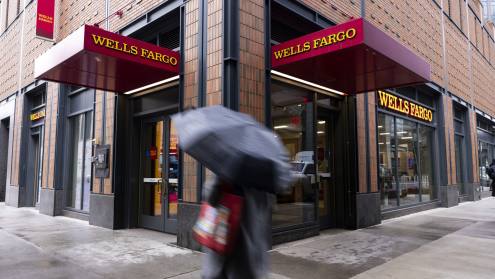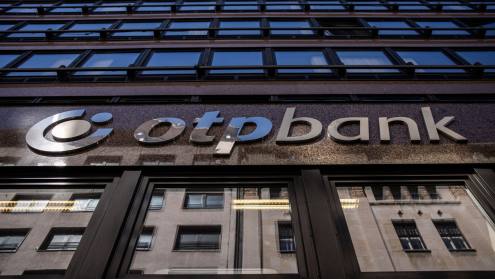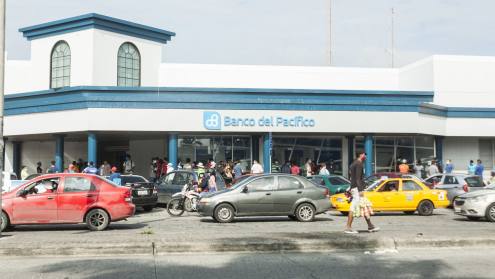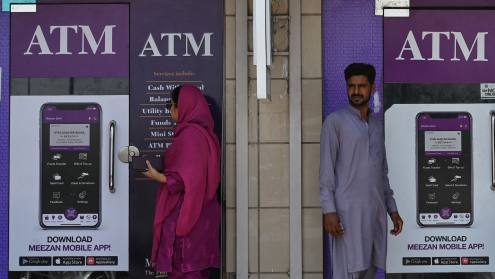The eyes of the world are on China. Over the past five years, its GDP has grown by more than 60% and its exports by 140%. Every week more than $1bn of foreign direct investment (FDI) flows into the country. China is already the fourth largest trading nation and, on current growth trends, by the year 2040, China will overtake the US as the world’s largest economy. China’s low-cost manufacturing and huge potential markets now have a profound impact on the earnings, prospects and plans of all leading global businesses.
So, any serious stalling of China’s economy would have repercussions around the world. A “hard-landing” would probably affect global commodity prices, which have risen significantly on the back of China’s voracious demand, erode margins for manufactured goods as Chinese businesses struggle against a backdrop of over-capacity, and damage stock valuations of the multinationals that trade with China or have invested there.
Much more seriously, the choking off of growth would affect the morale and confidence of millions of ordinary Chinese people. China needs to find 12-15 million new jobs every year just to keep pace with its population growth. It also has to provide opportunities for the 800 million people who live on the land in the poorer internal regions and have been left behind by the recent boom along the coastline.
Any serious correction in the economy would hamper the government’s efforts to maintain social and political harmony in this vast and fragile country. Political instability in the world’s most populous nation would create huge risks to the whole region and beyond.
Hidden dangers
Bad statistics have plagued China for decades and the dangers arising from unreliable figures are increasing; an economy as large and important as China’s cannot be run on bad data. While there are still arguments about the finer points, it is now clear that China’s economy has been overheating. The debate now centres on whether or not the government can engineer a soft landing and avoid the boom-bust cycles seen in 1990-1991 and 1995-1996.
Headline GDP growth at 9.6% for the second quarter of 2004 is not particularly alarming in the context of China, but the overall figure masks significant regional and market variations in growth rates.
Certain sectors are particularly exposed; sales of passenger cars have more than tripled in the past three years, for example, and this has prompted significant new investments in the auto industry, with extra capacity coming on-line just as questions about economic growth become more serious.
In the past three years, supply of office and residential property in major cities such as Shanghai and Beijing has skyrocketed. So far, demand remains strong, since the banks have opened up the coffers and enthusiastically funded the acquisition of new homes and offices.
However, many observers believe that as the substantial numbers of recent property development projects are completed and start to come online in the major cities, the property bubble could burst.
In other industries, there are fears that the extraordinarily rapid expansion in certain areas such as automotive, steel, aluminium and construction materials is leading to serious over-capacity, with growth in certain areas already being choked off by a severe shortage of electricity, which has led to rationing in major centres, such as Beijing. Earlier this year, alarm bells sounded in Beijing as inflation began to creep up, and producer prices rose to 6.4% year-on-year to July, against 2.3% for the whole of last year.
Intense interest is now focused on whether the government can manage a soft landing for the economy, so avoiding a harsh contraction like those experienced in 1990-1991 and 1995-1996.
In the most recent boom-bust cycles, the government reined in bank lending, causing the economy to stall. Businesses were left struggling with excess capacity and facing serious price deflation.
Cautious approach
This time, the government has reacted cautiously. From last August, it has taken a number of administrative and monetary measures in an attempt to engineer a soft-landing. These include raising bank capital adequacy ratios and specific administrative measures targeted at areas experiencing fast growth, including steel, aluminium, cement and building projects, such as shopping malls.
The measures include targeted price controls, restrictions on bank lending in certain industries, tightening of approval procedures for land development and suspension of conversion of agricultural land to other uses. The government has also ordered a clampdown on unapproved industrial projects and even, in extreme cases, suspended completion of massive, partially finished plants where the overheating is most serious.
Investment bubble
Many observers point to the high level of fixed asset investment as being a major cause for the current overheating. Investment growth has been sustained at a robust level in China since early 2002, when the current upwards cycle began in earnest. The question now is whether China has generated an investment bubble that will lead to an inevitable bust.
Fixed asset investment grew at around 40% a year in the first quarter of this year and ran at nearly 43% of GDP in 2003. It has become a major component of China’s GDP growth and accounted for more than half of the demand growth in 2003. These rates of fixed asset investment are unusually high, even for a developing country.
Korea, for example, had investment levels of nearer 25% of GDP during its period of rapid growth in the 1970s and 1980s.
But the biggest concern is that China’s massive investment in fixed assets could be staggeringly wasteful. There is still a worrisome lack of expertise in evaluating investment returns, which were never considered important under the old, centrally planned economy. There is also a lack of reliable statistics needed to predict market behaviour and make informed investment decisions.
Moreover, corporate restructuring in China is highly problematic.
Labour issues, debt restructuring and rigidities in asset valuation create such high restructuring costs that it is relatively cheap for some investors to start from scratch and build new factories, rather than restructure existing state-owned business as the government wants.
All these factors create a tendency towards over-investment, which the pessimists regard as unsustainable, since the over-investment leads to over-capacity and falling margins which, in turn, leads to a fall in new investment. All this could lead to a sharp correction in the economy.
Problems for lenders
As well as leading to inefficient investment, the lack of expertise and discipline within the domestic banking system is probably storing up more problems for lenders. China’s banks are already saddled with a huge non-performing loan (NPL) problem, which arose largely during the planned economy, when large allocations of state-owned capital were made through the domestic banking system more on the basis of social need than economic viability.
Any irrational investment now would increase the NPL burden at a time when the Chinese government is striving to clean up the balance sheets. NPLs are running at an estimated $400bn, so there is already a risk of a major financial crisis. Any increase in the stock of bad loans would delay plans for listing banks and raising much needed additional capital in the international markets.
Even in the manufacturing sector, which is enjoying huge growth through the surge in exports and the almost limitless supply of domestic low-cost labour, growth is threatened by the severe shortage of electricity.
The current risk, as the pessimists conclude, is that the government has done too little, too late and that it will shortly be forced into harsher measures, including raising interest rates, which could then tip the whole economy towards recession.
On the more positive side, there are signs that the government’s measures are starting to have an effect.
Inflation seems to be easing; producer price rises levelled out in July after a period of steep growth in the first half of the year. In addition, recently released figures showed a slowing in the broad money supply, which was 15.3% year-on-year in July, compared with 16.2% for June. Exports, the main bulwark of the economy, were worth $51bn in July, up 34% compared with the same month last year.
So, the government has some indications that its policy of gentle cooling is working and therefore the risk of it being forced into taking more aggressive steps appears to be receding.
There has even been some debate recently about whether China’s unusually high rate of investment must necessarily lead to bust. Some economists have made estimates of China’s incremental capital output ratio, or ICOR, which is a measure of the amount of capital investment required to generate one additional unit of GDP.
The ICOR is effectively an indicator of the efficiency of capital investment in terms of creating growth, and China compares favourably with other Asian countries during their periods of rapid expansion.
Improvements
Further analysis of the ICOR’s components shows that the manufacturing ICOR has been improving over the past decade, probably a reflection of progress in the transition from a planned economy towards a market economy.
Given the extraordinarily rapid industrialisation and urbanisation of China, it should not be surprising that the rate of capital investment, particularly in industry and infrastructure, should be unusually high.
So, while there are some dangers of a boom-bust resulting from inefficiencies in the capital investment process, it appears that the government is managing a more sedate landing in the economy than it did in 1995-1996.
During the year before that last bust, the economy grew at 12.7%, and back then there were several other difficulties that are absent during this cycle. In 1994, inflation surged to 22%, which dwarfs the current pace of 3%-4%. Government revenues were basically stagnant, whereas today they are growing at around 30%. The government has also started to tackle the bank’s NPL problem by transferring almost $200bn to specialist asset management companies, as well as establishing a new regulatory watchdog tasked with reforming the banking industry.
Character change
But the biggest difference between the China of today and that of a decade ago is one of character: the economy in 2004 is bigger, stronger and far more experienced than it was in 1994; China’s share of world GDP has basically doubled; average per capita income along the coast has risen to the stage where there is a significant consumer economy; China’s exports have nearly quadrupled; and its currency reserves have ballooned from $120bn in 1994 to $438bn.
China has distinguished itself through several tough learning experiences. In particular, during the 1997-1998 Asian financial crisis China not only resisted the pan-regional currency devaluation, but also kept its growth momentum largely intact during the global downturn in 2001.
China is no longer a basic, inexperienced developing economy that finds itself on the world stage for the first time. There is now complete recognition within the Chinese government that the country’s lending-driven, investment-led, overheated economy needs to be brought under control.
My personal bet is that China will rise to the occasion.
Tim Clissold has lived and worked in China for 16 years and has recently written a book ‘Mr China’, which was published by ConstableRobinson in April 2004











